SIGN UP AND GET 10% OFF
Join the Kasho Community and get a 10% voucher code as a welcome gift.


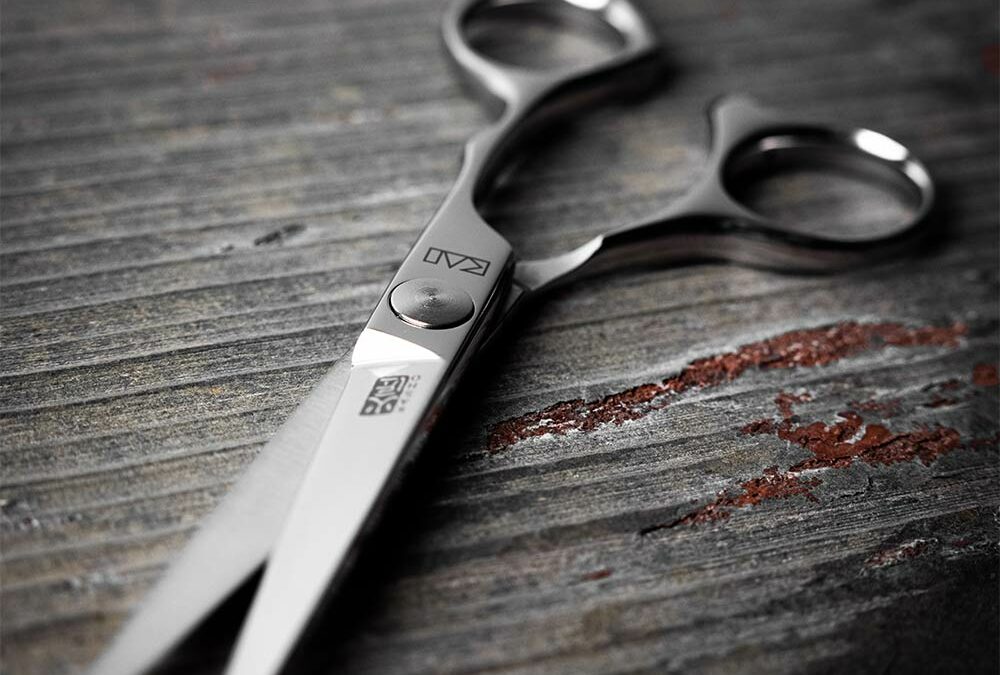
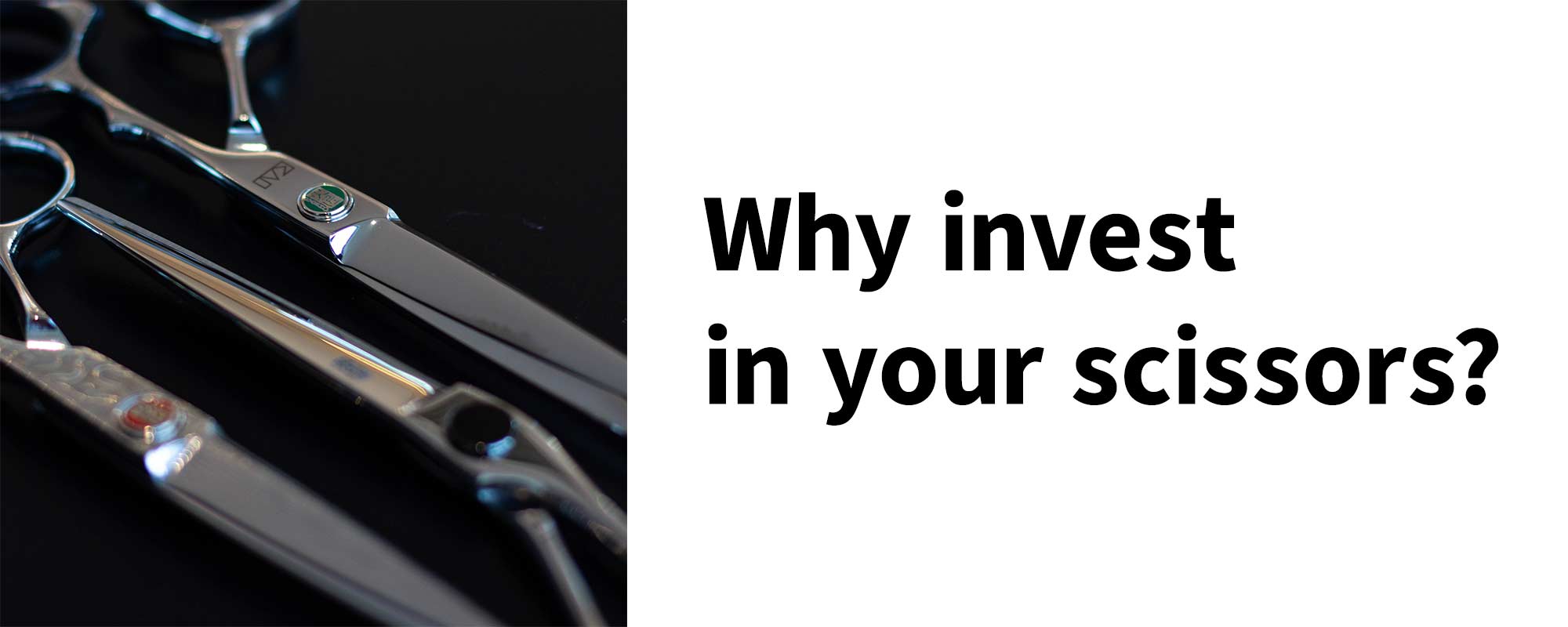
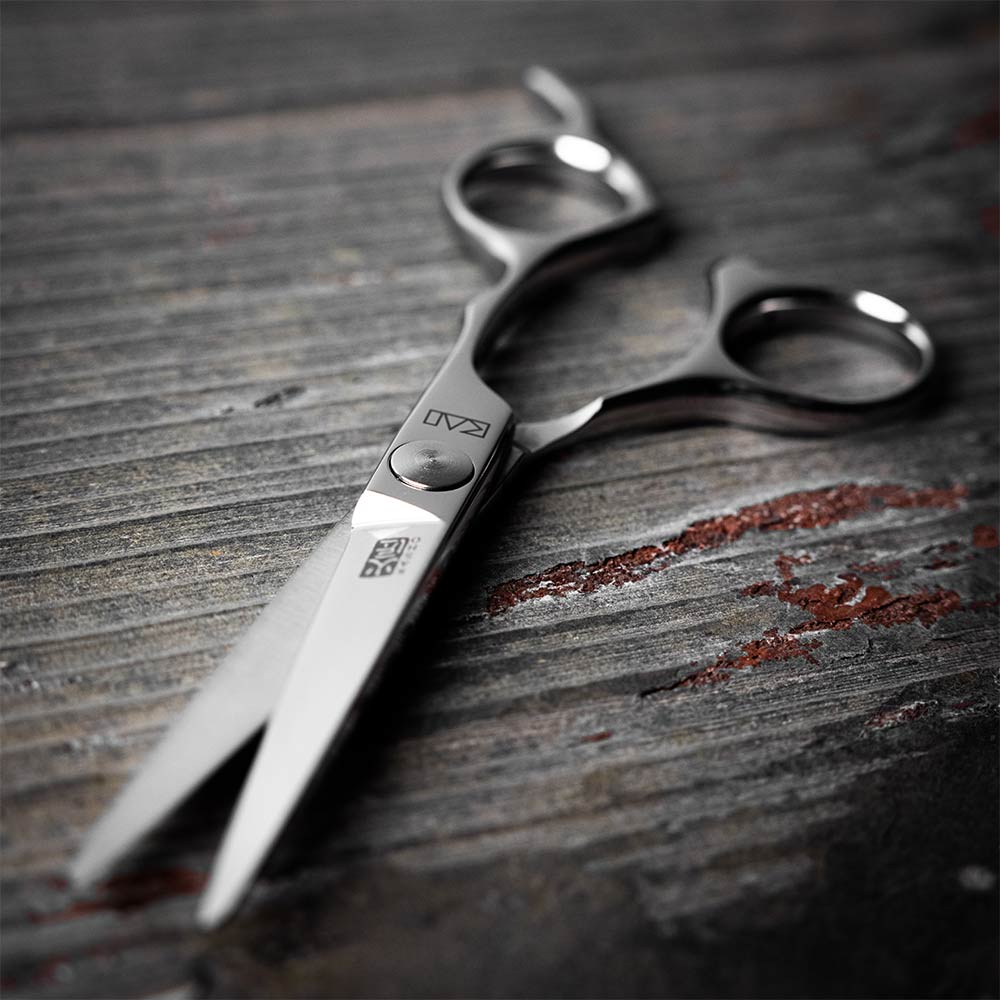
Hey everyone, let’s talk about something crucial for all stylists: investing in your tools. While many stylists spend big on electric tools like hairdryers and straighteners, the importance of a good pair of scissors is often overlooked, despite their significant role in our daily work.
Most stylists start their careers with a basic pair of scissors and replace them annually. Surprisingly, many can’t even recall the brand or size of their scissors, yet they are intimately familiar with their hairdryers and straighteners. This is concerning given how frequently scissors are used.
Consider this: you’ll use your scissors for approximately 1,600 hours or 96,000 minutes annually, which equates to 67 full days a year. Quality scissors are vital for comfort, efficiency, and performance. On average, stylists make around 2,400 cuts per year, translating to 10 cuts a day, five days a week, for 48 weeks. This makes scissors the most used and most profitable tool in your kit.
Let’s break down the numbers. If an average haircut costs £32, your scissors can generate £76,800 annually. Investing in high-quality scissors like Kasho, which can last up to 10 years, means your tool could help generate £768,000 over its lifetime. Spending £500-£1,000 on top-notch scissors becomes a small investment for such returns. With financing options, it’s equivalent to the cost of one haircut per month.
Despite the benefits, many talented stylists continue using beveled blade, non-ergonomic, weaker steel scissors. This choice often leads to hand fatigue and shoulder tension, much like a professional chef using an inferior knife instead of a premium KAI chef knife. The lack of emphasis on the right tools from the start of a stylist’s education contributes to this issue.
A talented stylist remains talented regardless of the tools, but the right scissors enhance the ease, efficiency, and precision of their work. Investing in high-quality scissors not only improves your performance but also promotes better wellness by reducing physical strain.
Using the right tools is essential for achieving professional success and maintaining your health. To learn more, visit our blog and explore our content on choosing the best tools. We also offer a WhatsApp function for direct consultation to help you make the right investment in your scissors.
Investing in quality scissors is not just about improving your craft—it’s about making a smart business decision that supports your long-term health and success.
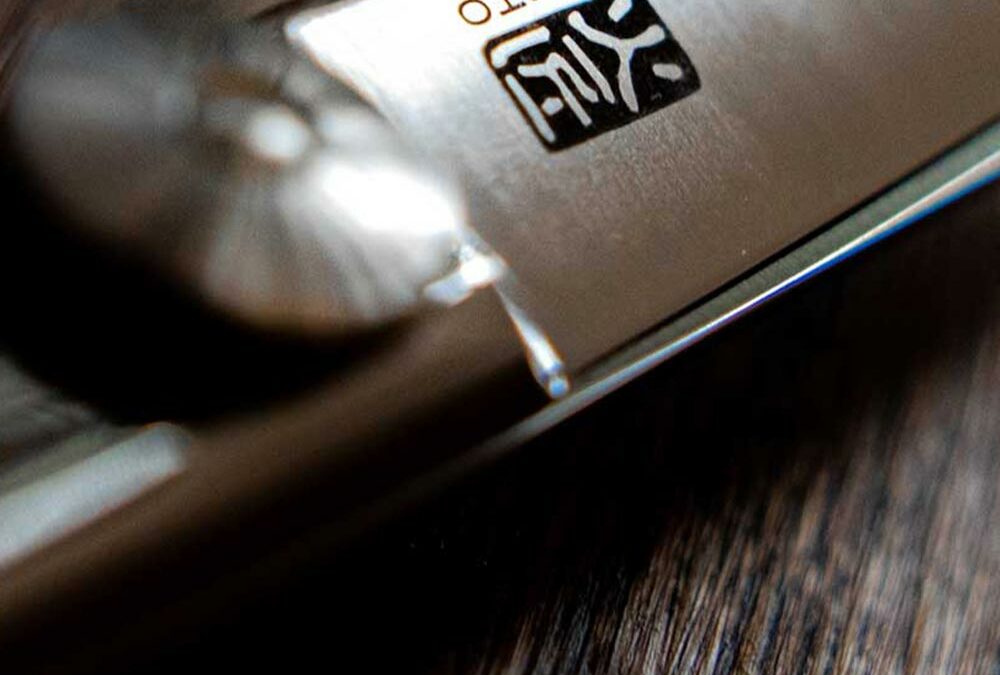
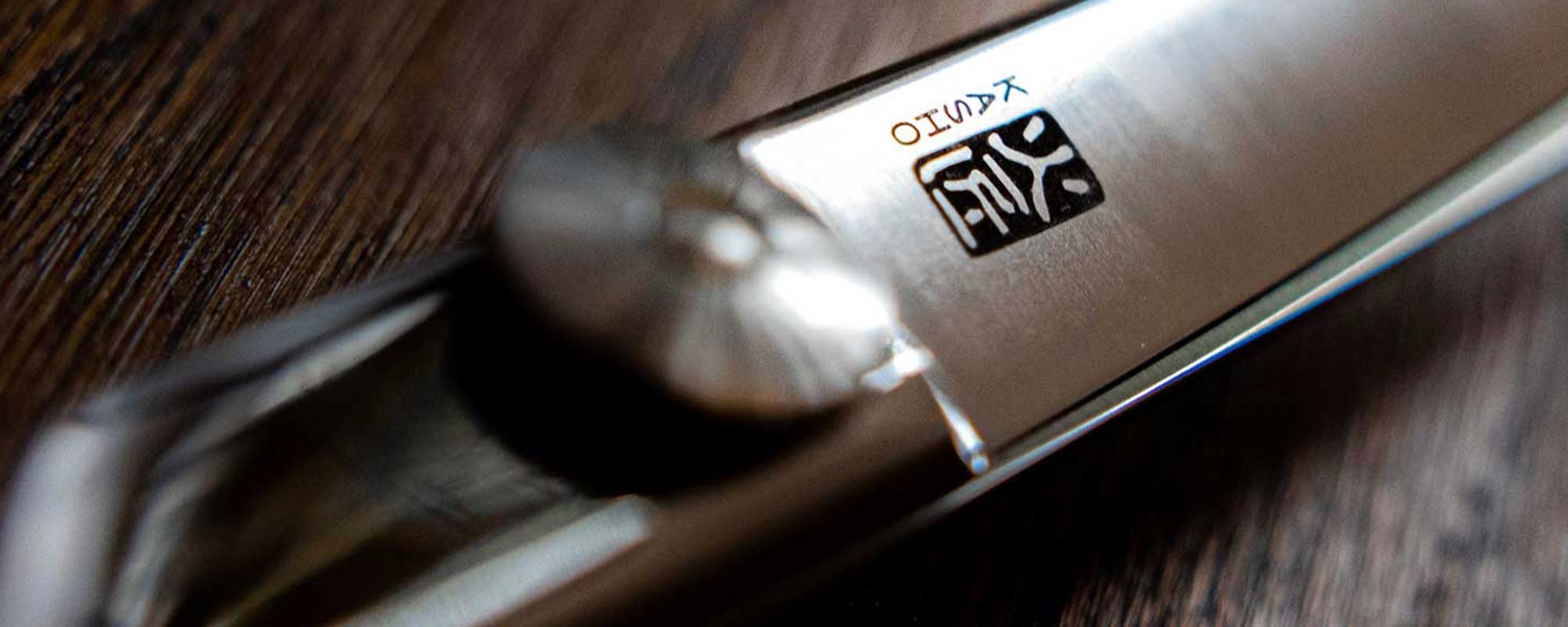
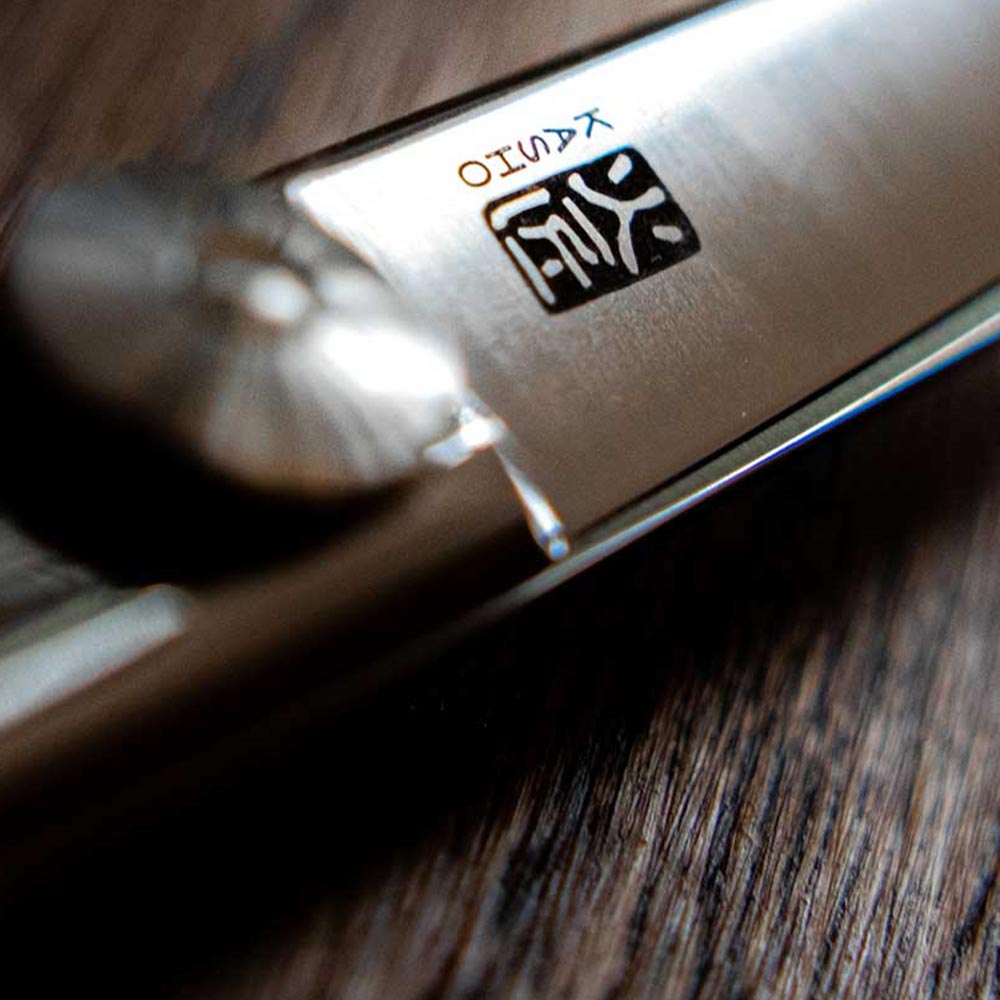
Choosing a new scissor is not only an important and personal purchase but also an investment. An investment in yourself and your craft. The aim of this article is to help you understand the ins and outs of a very specific element of your scissor: the steel and its origin.
On the surface it’s not a very exhilarating or a very sexy topic, but it’s an incredibly important one and I’m going to explain why understanding scissor steel is crucial for unlocking the magic in your hands.
When it comes to investing in new scissors, not all steels are created equal, and we’re here to break down the nitty-gritty – VG10 vs. sintered, Japanese vs. German – with a crystal-clear message: Japanese scissors are the real winner!
Before we dive into the ‘steel showdown’, let’s address the elephant in the salon – why does it even matter? Well, your scissors are singularly the most important tool in your tool box and the type of steel they’re made of can make all the difference between a meh cut and a slay-all-day masterpiece. It also makes a massive difference in the longevity and consistency of the sharpness of your scissor.
Meet VG10, the VIP of Japanese steel, crafted for samurai swords – this bad boy means business. VG10 is all about that razor-sharp edge – the kind of precision that can turn a haircut into a work of art.
Some additional facts! VG-10 is known for its high hardness, typically ranging from 59 to 61 HRC (Rockwell Hardness C scale). This level of hardness allows for excellent edge retention, meaning the blade can maintain its sharpness through extended use.
But there’s more! VG10 doesn’t just play the sharp game; it’s the MVP of durability and corrosion resistance.
Now, let’s talk sintered steel, which is used in the Kasho Millennium scissor – the unsung hero in the durability department. Think of sintered steel as the “Tough Guy” of the scissor world – strong, resilient, and ready for any hair adventure, yet it’s light. A scissor forged with sintered steel feels almost weightless in your hand. It’s an unmatched experience.
Through the magic of blending and compacting metal powders, sintered steel emerges as the heavyweight champion, promising you a scissor partner that stands the test of time.
Alright, let’s settle the score between Japanese and German steel. It’s like choosing between a ninja and a knight – both cool, but one clearly has the edge.
Japanese Steel:
For additional information about Japanese steel, click here.
German Steel:
When you’re eyeing those shiny new scissors, remember this: Japanese scissors are the holy grail of the hairstyling universe. VG10 steel brings precision, durability, and a touch of glamour to your fingertips. It’s not just a purchase; it’s an investment in your craft, your clients, and the professional that is you.
So, whether you’re a seasoned pro or new to the hair game choose Japanese, as you deserve scissors that truly represent the work you want to be your hairdressing legacy.
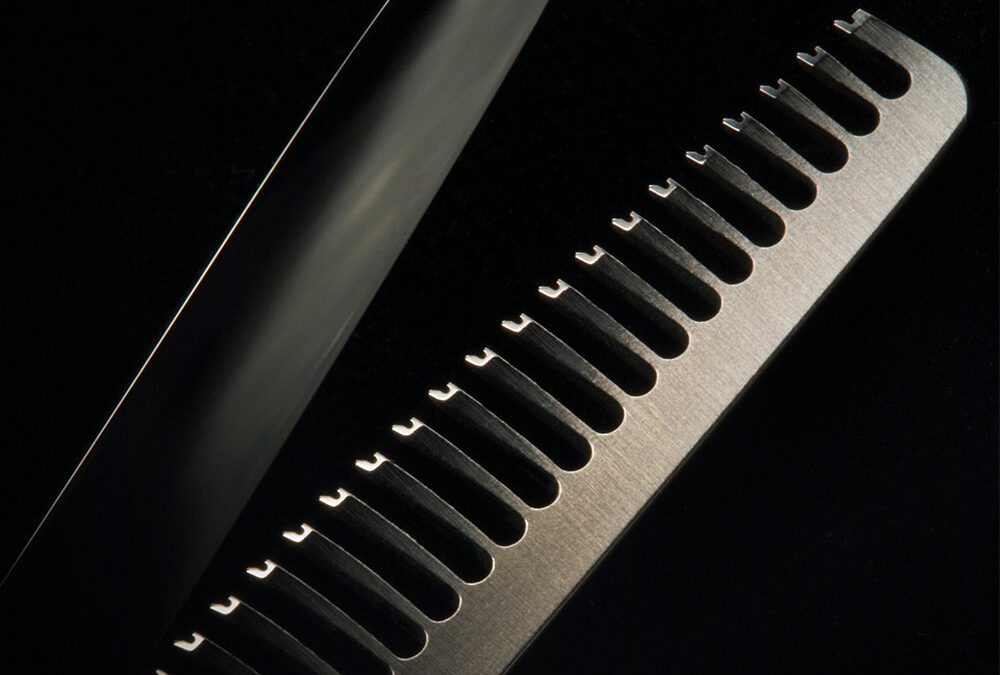
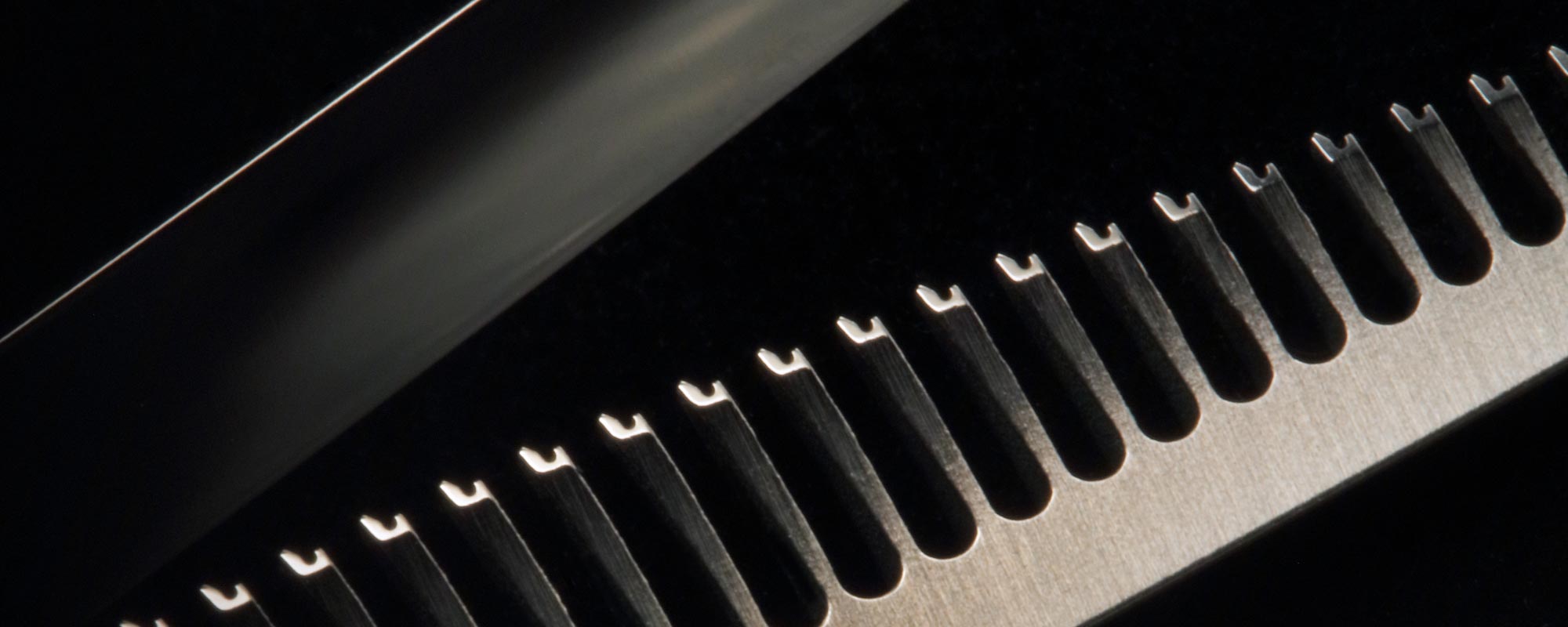
Alright, my fellow hair enthusiasts, let’s talk about one of the handiest tricks up our sleeves as professional hairstylists — thinning, also known as texturizing scissors. Sure, we’re all trained, know and work with the classic scissor-over-comb technique to create texture and reduce volume, which of course, as professionals should be mastered. The downside when using the scissor-over-comb technique is that it’s substantially more time consuming than using the evolved tools created for this specific task at hand. And let’s face it, why wouldn’t we use the right tools for the job, it’s simple professional evolution. Yet, this is a tool that’s so often been misused, slightly misunderstood, and sadly not given the recognition as the superhero tool that it is. So let’s go about changing that…
Have you ever actually wondered about the real artistry behind texturizing scissors? Well, today we’re casually diving into the oh-so-brilliant world of cutting hair with these handy tools. My tool-box is fortunate to hold some of the best texturing scissors available on the market, the Kasho Green Series, which are simply incredible. Further down you can scroll through a wide range of options to help you find your next tool, but for now, let’s delve in.

First thing’s first, why go for texturizing scissors when you’ve got trusty regular ones? Well, texturising scissors aren’t just your run-of-the-mill scissors. They’re designed to selectively remove bulk without sacrificing length. I like to think of them as the artist’s brush for creating texture, volume, and that effortlessly chic look, and they do so without compromising on time or technique.
Not all thinning scissors are created equal. There are different types with varying tooth counts, and yes, it does matter. Texturizing scissors with 15-teeth are great for short-medium hair that requires a chunkier effect. The fewer teeth, the less hair is being texturised. 30-teeth is a versatile, midway texturising scissor great for medium to thick hair, creating moderate texture and moderate layers. Then there’s the 38-teeth, best for thick or coarse hair, designed to create a bold, more transformative texture with a significant volume reduction. You need to pick your texturising scissors based on the result you’re aiming for, but ideally, throughout your career, you can add more to your toolbox, giving you a complete set.
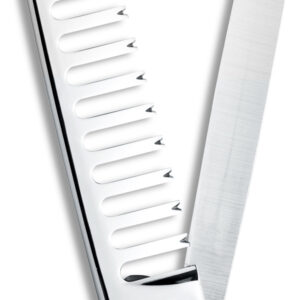


The entire purpose of this article is to eliminate confusion, so I hope that this next part doesn’t completely mess that up. Because in addition to the amount of teeth, there’re also texturizer variants withTop Teeth Blades and Bottom Teeth Blades. So to keep things non-confusing, let’s briefly break down why.
The Top Blade texturizing scissor, which within Kasho is also known as the ‘A-Type’, is mainly used when working on a classic men’s cut and for short hair and transitions. The final result is a harsher texture with duller lines, creating harder contours. Type A is more limited than the ‘B-type’, or Bottom Blade. A bottom teeth blade is often favoured when working with Asian and Middle Eastern hair. Hair that’s straighter and much thicker. Type B is primarily for longer and thicker hair because of the way that long hair falls into the teeth better, but this is absolutely not exclusive. Of the two variants, the Bottom Blade is a more versatile tool for today’s clientele. More of a guaranteed all-rounder.
In fact, if you were to only ever invest in one texturising scissor, I would urge you to invest in the Green Texturising Scissor – KGRS-60 OS WT38B, it’s an offset, Bottom Blade Hybrid texturizer with 38 tapered (slightly curved) teeth and a ballbearing screw system. It’s simply an incredible all-rounder for your tool box.
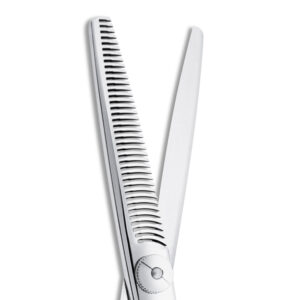
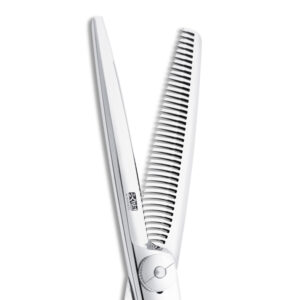

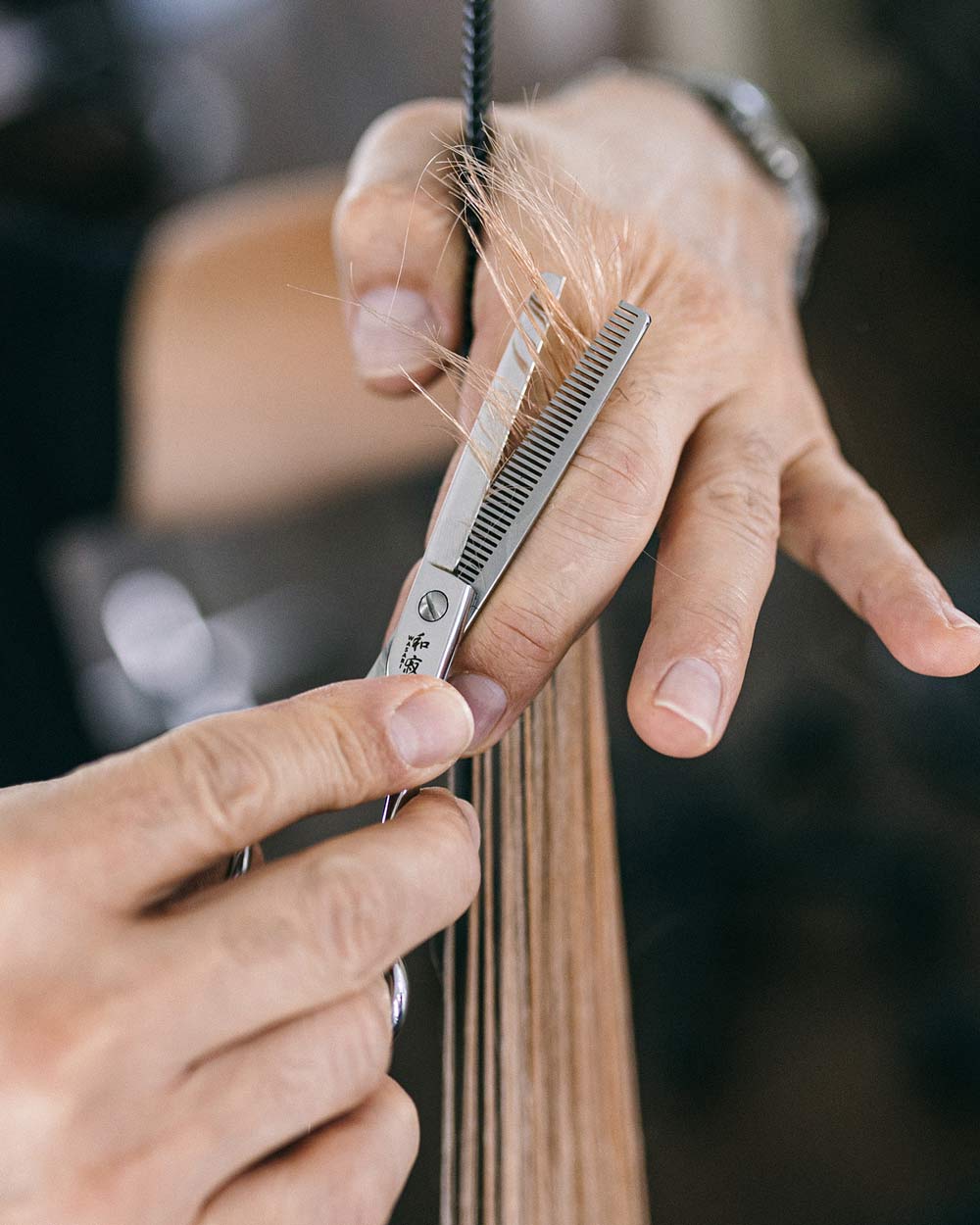
Just like any great painting starts with a blank canvas, a fabulous haircut starts with well-sectioned hair. Divide the hair into manageable sections and clip away what you’re not working on. This ensures you have control and can see exactly where those texturizing scissors are doing their magic. One of the biggest errors when using this type of scissor is repeating a section and over texturising. Just like everything we do, there is a controlled technique to follow, so section that hair and work methodically.
Unlike the horizontal action of scissor-over-comb, thinning scissors work best in a vertical motion. Take a small section of hair, hold it vertically, then gently open and close the texturising scissors along the length of the hair. This technique gives you a more naturally textured finish.
Don’t go thinning-happy on the whole head. Be selective about where you want to reduce bulk or add texture. Common areas include adding volume around the crown, and when creating a feathered look through the ends. This can’t be stressed enough. Don’t go all Edward Scissorhands on your client. This’ll only result in fluff.
Remember, less is more. Start with a few snips and assess the result. You can always take more off, but gluing hair back on is somewhat trickier. Adjust the pressure and the amount of hair you’re working with based on the effect you’re aiming for.
Texturizing (or thinning) scissors give you the power to create an endless range of textures, from soft and subtle to bold and edgy. It’s all about customisation and creative expression!
Say goodbye to harsh lines. The right texturising scissors blend layers seamlessly, ensuring a natural flow in your haircut. That is unless you choose to create a super-choppy texture!
The lightness achieved with texturising scissors means hair bounces and moves beautifully. Your clients will thank you for the extra oomph!
So, there you have it—the lowdown on mastering the art of texturizing scissors. It’s all about being selective, going vertical, and customising for that perfect texture. Now, armed with this knowledge, go forth and unleash your inner hairstyling connoisseur with some new texturizers. Your clients’ hair will thank you for the magical touch of a Kasho texturing scissors! Happy snipping!
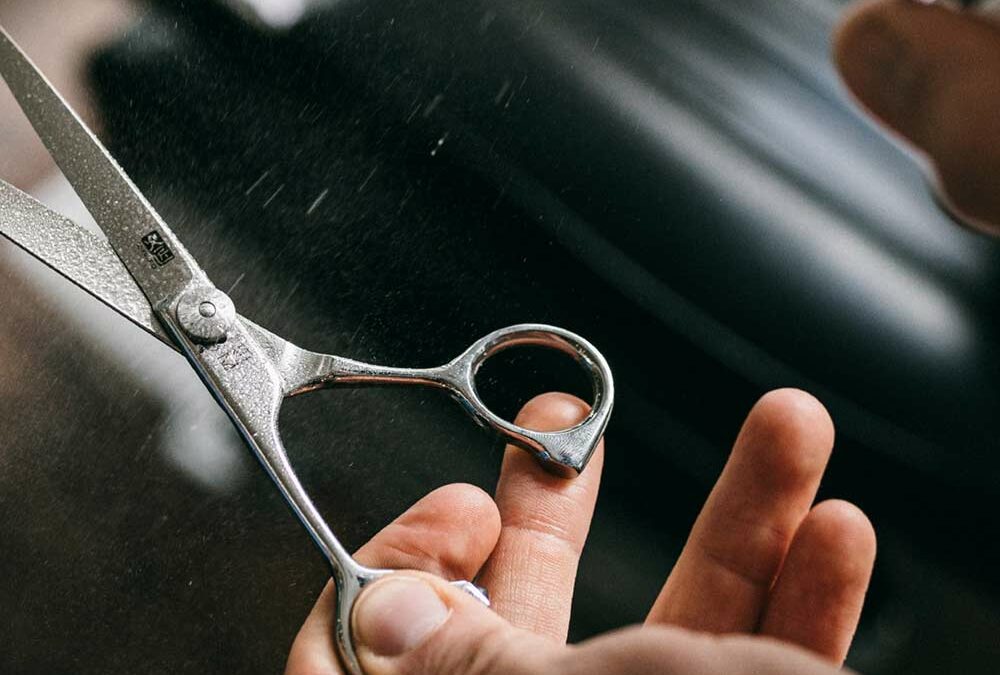
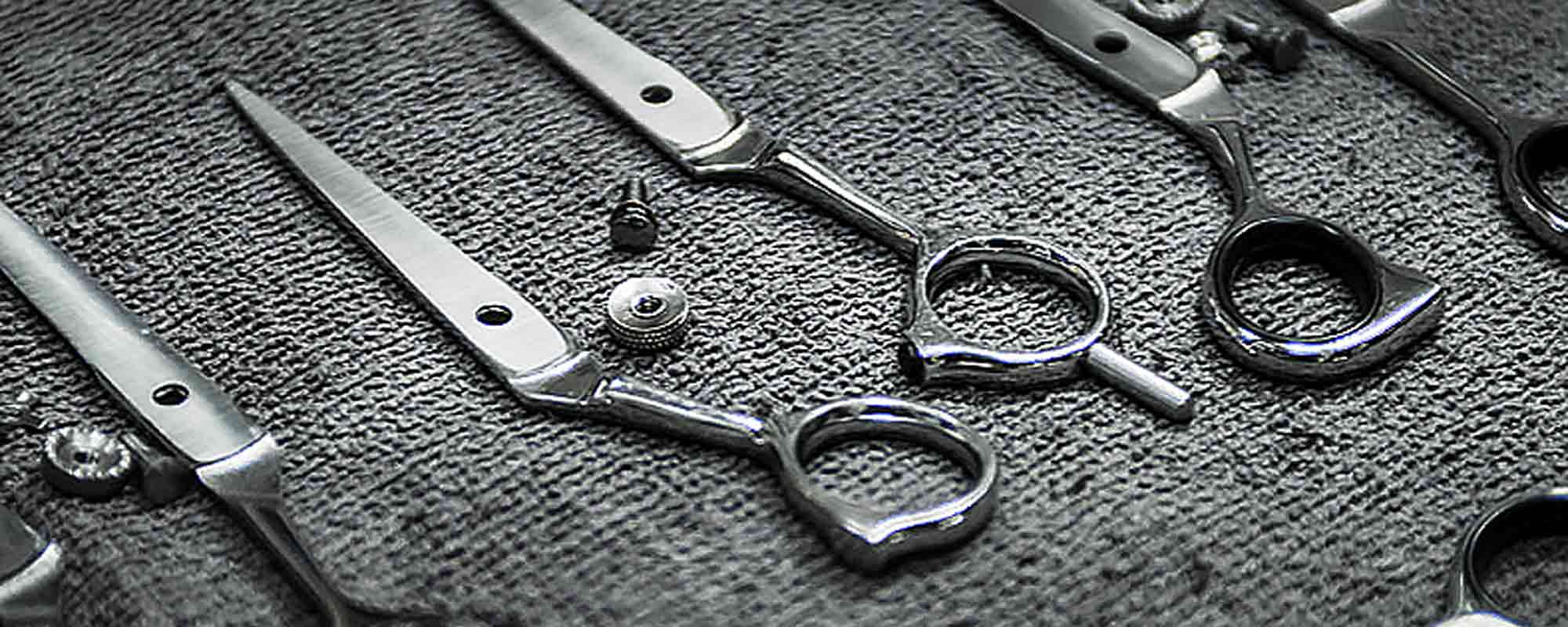
In the world of hairdressing and barbering, the tools of our trade are as crucial as the skills of the person holding them. Among these tools, the Kasho scissor stands out as a symbol of precision and craftsmanship. A Kasho scissor can last the span of your career, but they, like all finely tuned tools, require servicing.
To maintain the cutting edge – quite literally – it’s imperative to prioritise regular servicing for your Kasho scissors. In this article, we’ll explore the reasons why investing time and effort into the maintenance of your Kasho scissors is a crucial aspect of ensuring their longevity and performance. We recommend an annual service to ensure ultimate longevity.
Precision Matters
Kasho scissors are renowned for our razor-sharp blades and unparalleled precision. Over time, however, even the highest-quality blades can lose their edge due to regular use. Regular servicing helps to maintain the sharpness of the blades, ensuring each cut is as clean and precise as the first. This is especially important in professions where precision is paramount, such as in the art of hairstyling.
Extend Lifespan
Just like any mechanical tool, Kasho scissors are subject to wear and tear. Regular servicing helps identify and address issues early on, preventing more significant problems down the line. By addressing small problems promptly, you can significantly extend the lifespan of your Kasho scissors, protecting your investment and ensuring they serve you well for years to come.
Optimal Performance
A well-serviced Kasho scissor is a high-performance tool. The smooth movement of the blades, the tightness of the pivot screw, and the overall functionality of the scissor contribute to its performance. Servicing helps to fine-tune these elements, ensuring that your Kasho scissors consistently deliver optimal performance, making your work smoother and more efficient.
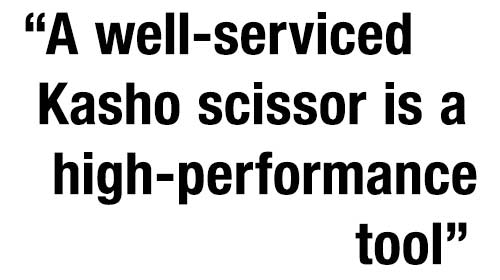
Protect Your Investment
Kasho scissors are a premium tool, often representing a significant financial investment. Regular servicing is a proactive approach to protect that investment. It’s more cost-effective to service your scissors regularly than to wait until a major issue arises. A well-maintained scissor is less likely to develop serious problems that could result in irreversible repair or even a replacement.
Maintain Hygiene Standards
In our professional world, maintaining high hygiene standards is non-negotiable. Regular servicing includes thorough cleaning and sterilisation of your Kasho scissors, ensuring that they meet the necessary hygiene standards. This not only protects your clients but also upholds your professional reputation. We encourage that your scissors are cleaned with a scissors spray after each use, but during the service, the entire scissor and its parts are deep cleaned.
In the hands of a skilled professional, a Kasho scissor is a work of art. To preserve its precision, extend its lifespan, and ensure optimal performance, regular servicing is not just recommended – it’s essential. Investing time and effort in the maintenance of your Kasho scissors is a commitment to the artistry of your craft, protecting your investment and upholding the high standards that these scissors represent in the world of hairstyling and barbering. So, don’t just cut hair; cut it with precision, style, and the longevity that comes from regular Kasho scissor servicing.
You can book your servicing here.
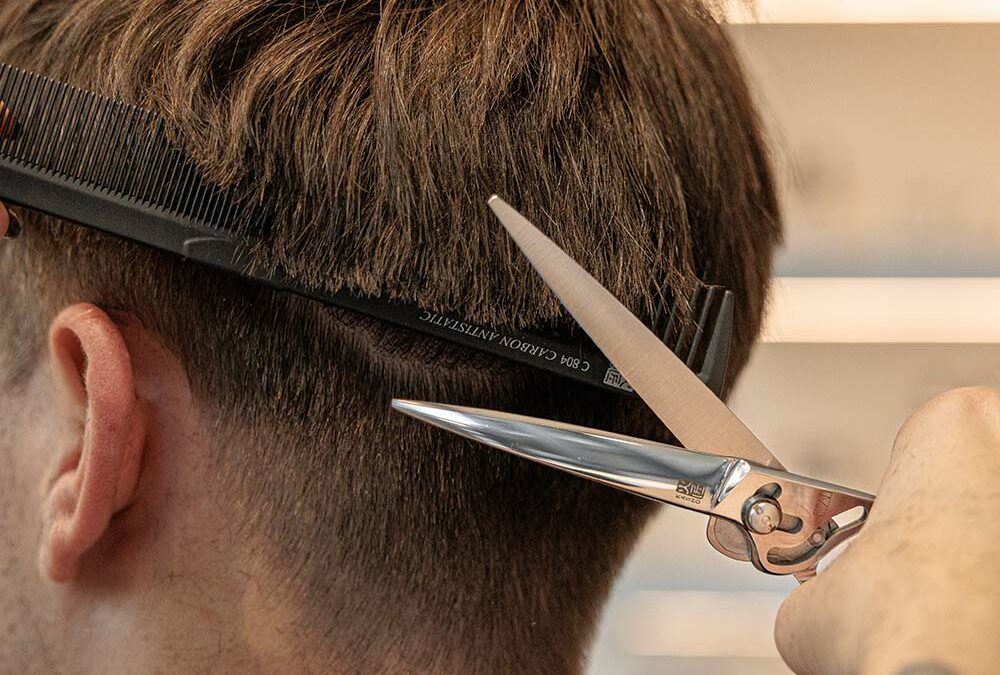
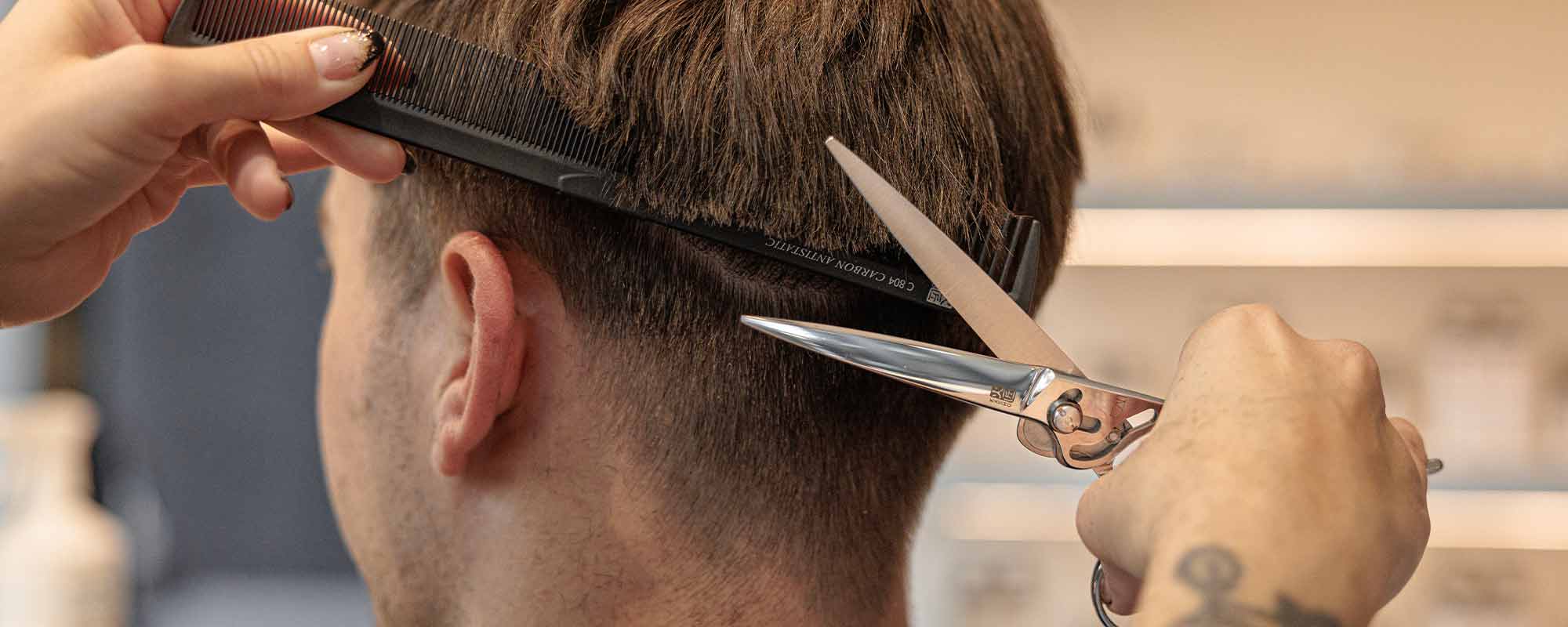
Our not so small world of hairdressing has changed a lot in the past years, and thankfully so has our understanding of the importance of ergonomics. In the busy and increasingly intricate world of hairdressing, precision and comfort are now front and centre.
Among the various tools at your disposal, the choice of scissors plays a crucial role in achieving seamless cuts.
As you know, Kasho scissors are renowned for our craftsmanship and cutting-edge design, favoured by some of the world’s leading stylists. However, the ergonomic aspect of using Kasho scissors is equally vital to ensure not only exquisite hairstyles but also the well-being of you as the stylist working with our tools.
Understanding Ergonomics: First things first, let’s understand and dive head-first into the term. Ergonomics is simply the study of how tools and equipment can be designed to fit the human body, enhancing efficiency, comfort, and safety. In the realm of hairdressing, the ergonomic design of scissors becomes crucial, considering the repetitive nature of cutting and styling. At 10 cuts a day, a busy stylist will have their scissor in-hand for 1,600 hours a year, or 96,000 minutes, equating to 67 full days. Not only is choosing the right scissor important, but choosing a scissor that’s ergonomic and gentle on your body is paramount. What starts in your hand moves to your shoulders and neck. The days of institutionalised pain can be a thing of the past when choosing the right cutting tools, and using them in the right way.

Kasho scissors are revered for their precision engineering and ergonomic design. Understanding and utilising the following features can significantly enhance the ergonomic experience when cutting hair:
Offset Design: Kasho scissors typically have an offset handle design, which is what we would always recommend; where the thumb ring is positioned slightly lower than the finger ring. This design reduces strain on the hand and wrist, promoting a more natural and relaxed cutting posture.
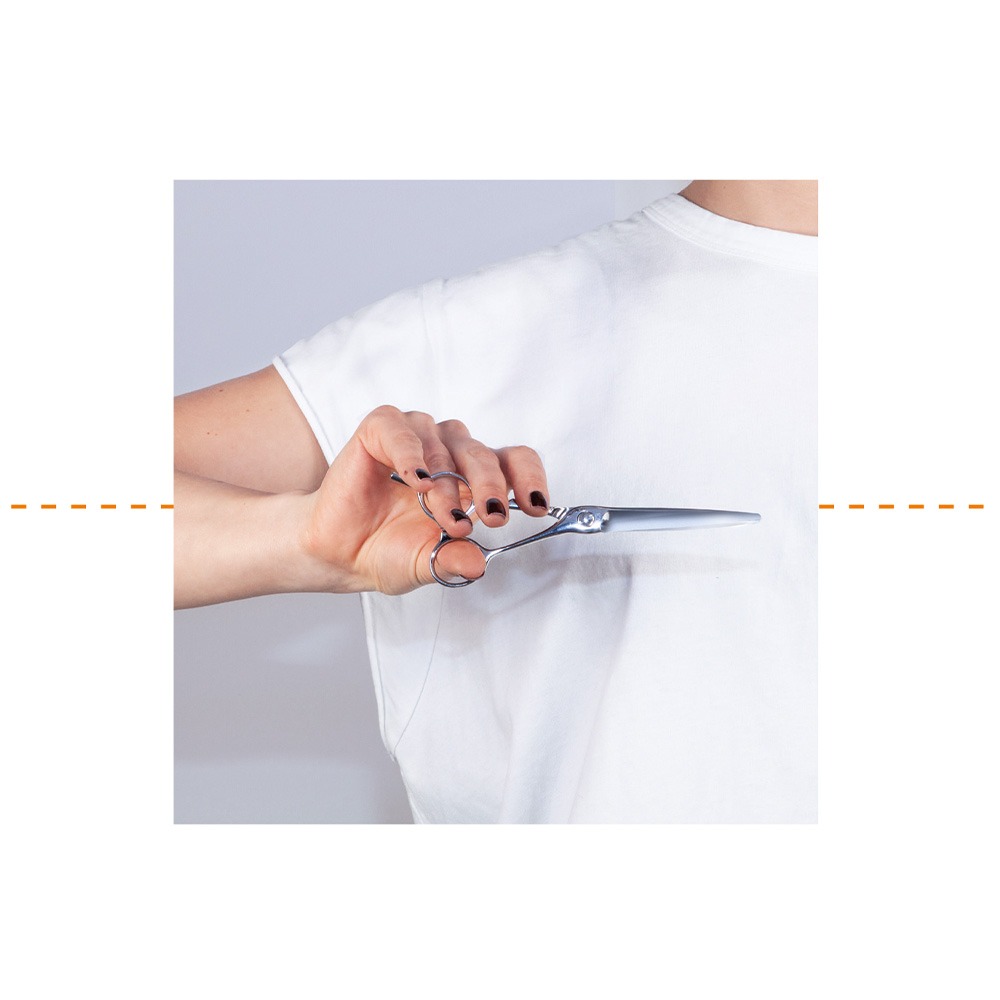

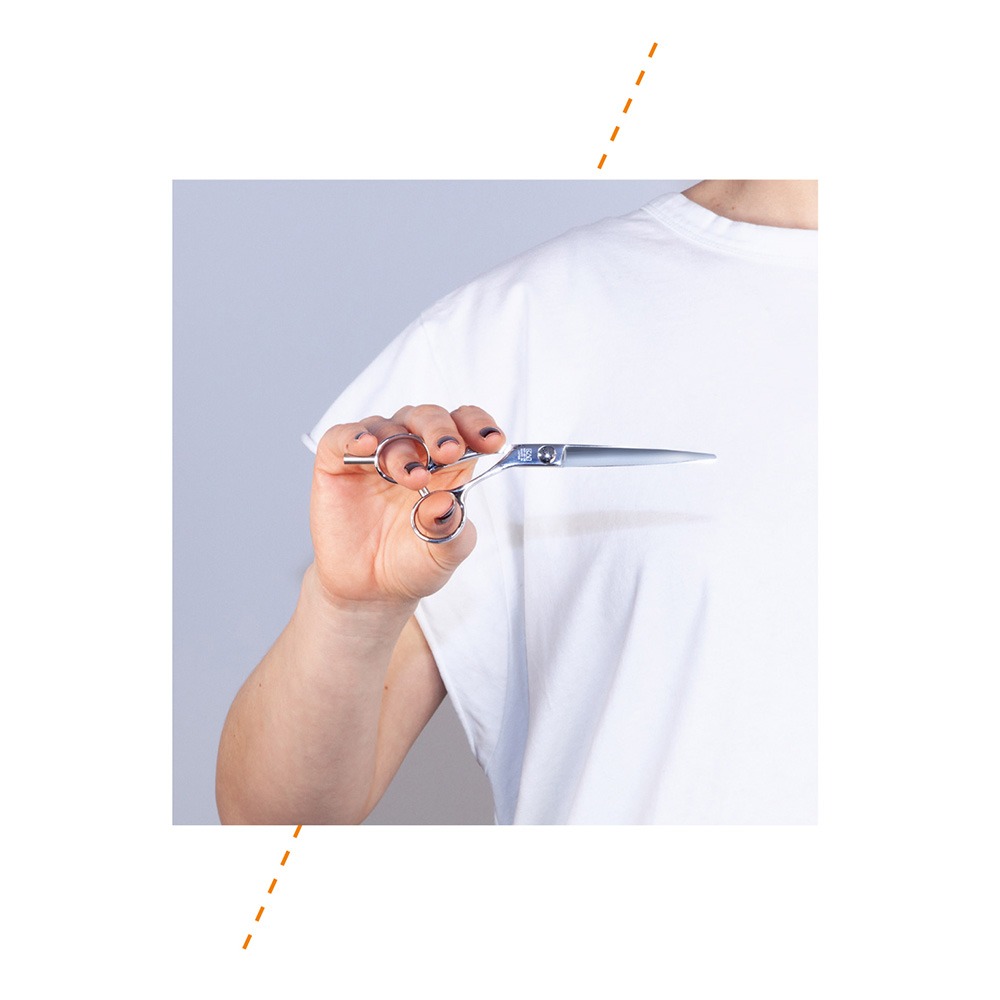
Ergonomic Finger Rest: All Kasho Scissors either come with an adjustable or ergonomically integrated finger rest. This feature allows you to customise the position of the finger rest according to your hand size and cutting style, preventing unnecessary strain.
Convex Edge Blades: Kasho scissors features convex edge blades, which require less force to cut through hair. This reduces the effort needed during cutting, minimising strain on your hand and wrist. This coupled with Japanese precision steel also results in a sharp effortless result.
Ball-bearing Screw Systems: We have an entire category with a variety of Ball-Bearing screw systems. By using an enclosed ballbearing unit, friction between the blades is brought to an absolute minimum. This in turn greatly reduces hand fatigue from the motion of opening and closing your scissor day-in and day-out because you don’t need to apply any additional cutting pressure.
Lightweight Materials: All Kasho scissors are crafted from high-quality steel, and many from lightweight materials, like sintered steel. This not only contributes to the overall balance of the scissors but also prevents unnecessary fatigue during prolonged use.
Proper Grip: Hold the scissors using a relaxed and natural grip. The thumb should rest in the thumb ring, and the remaining fingers in the finger ring, allowing for controlled and precise movements.
Body Position: Maintain a comfortable and upright posture while cutting. Avoid excessive bending of the wrist or overreaching, as these can lead to discomfort and strain.
Regular Breaks: Take short breaks between cutting sessions to stretch and relax your hands, wrists, and shoulders. This helps prevent cumulative strain injuries associated with prolonged use.
Customisation: Adjust the scissor tension and finger rest to suit your individual preferences. Experiment with different settings to find the configuration that best accommodates your hand size and cutting technique.
In the artistic realm of hairdressing, mastering the use of tools is as essential as the creative vision itself. Kasho scissors, with our ergonomic design, elevates the cutting experience by prioritising both precision and comfort. By understanding and implementing ergonomic principles, you’ll not only achieve flawless cuts but also ensure the longevity of your craft by prioritising your own well-being in the salon.